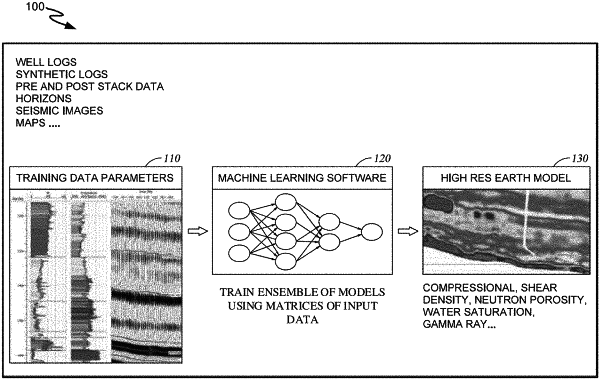| CPC G06N 20/00 (2019.01) [E21B 44/02 (2013.01); E21B 49/00 (2013.01); G05B 13/0265 (2013.01); E21B 2200/20 (2020.05)] | 15 Claims |

|
1. A method, comprising:
receiving detected data, wherein the detected data includes formation attributes relating to one or more depth points along or near a wellbore;
providing inputs to a plurality of machine learning models based on the detected data, wherein each machine learning model of the plurality of machine learning models has been trained through an iterative supervised learning process based on labeled training data and a corresponding objective function;
receiving output values from the plurality of machine learning models based on the inputs;
determining a measure of variance among the output values;
generating a confidence indicator related to the output values based on the measure of variance;
omitting a subset of the plurality of machine learning models from an ensemble of machine learning models based on:
the confidence indicator; and
a determination of whether a subset of the output values corresponding to two physical formation attributes satisfy a known relationship between the two physical formation attributes; and
using the ensemble of machine learning models to determine an adjustment to a drilling or reservoir operation, wherein the adjustment to the drilling or reservoir operation comprises a change to: a well placement, a well trajectory, a mud weight, a backpressure, a pump rate, a fluid composition, a casing depth, a weight on bit, rotations per minute, flow rate, a torque on bit, a bit speed, a tripping speed, a rate of penetration, reservoir simulation, artificial lift, water injection, gas injection, enhanced recovery, controlling water production, zonal isolation, or well workover.
|